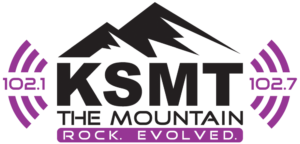Dozens of concerned residents gathered at the Summit County Community and Senior Center on Tuesday evening for a widespread discussion about safety on the ski slopes.
The discussion was lead by the Alliance for Skiers and Snowboarders Responsibility, a recently founded group dedicated to better helping skiers and snowboarders understand and adhere to their responsibilities in regards to safety while on the mountain.
“This is kind of the first of its kind,” said founder Katherine Jeter, a part-time resident of Summit County and lifetime skier. “We spent the last year assessing the lay of the land, and looking at what other similar organizations already existed. With others out there it wouldn’t have made sense to form another, but none of those other groups had the mission that we do. The others are focused more on the resorts enforcing and creating safety regulations. But we think the skiers and riders have a responsibility to each other to create a safer environment.”
The small, grassroots organization was formed after Jeter herself got into an accident at Copper Mountain in March 2017. Jeter, 78-years-old at the time of the collision, said that a snowboarder plowed into the back of her and sent her tumbling down the slope. She fractured both of her lower legs and an ankle, and spent the next year at the Castle Peak Rehabilitation Center in Eagle.
At Castle Peak, Jeter befriended Patrish Koening, another skier who had already been at the center for a few months after a collision with a hit-and-run skier at Vail Ski Resort left her with multiple fractures and a closed head injury. While commiserating over their injuries, Jeter and Koening decided it was time for changes.
“We were both shattered by the experience,” said Jeter. “For years riding on the shuttle to and from resorts we’d always hear people say that skiing has gotten really dangerous, or that they were hit on the mountain or almost hit. We talked a lot about responsibility, and whose responsibility it is to address safety issues and accident prevention… If it is the skiers and riders responsibility, we need to educate them. But whose job is it to educate the skiers and riders, and where and when should that happen?”
Recommended Stories For You
The Alliance for Skiers and Snowboarders Responsibility had their first meeting in Jeter’s Frisco condo in March 2018 — a small group of 11 composed of ski patrollers, resort ambassadors, mountain enthusiasts and more. Tuesday’s meeting was the first time the group took its message to the public.
In the jam-packed Loveland Room of the senior center, alliance member Colette Berge kicked off the meeting by asking anyone in the notably older crowd to raise their hands if they had been hit on the slopes before. Dozens of hands went up without hesitation. Visitors openly voiced concerns that they didn’t feel as safe on the ski slopes as they did in years past, that they were nervous about collisions and often avoided weekend trips to resorts when they knew they would be busy.
The group collectively identified issues with skier education, substance abuse, enforcement of rules on the slope and respect for fellow skiers and boarders as the core issues surrounding skier safety — diving more specifically into ancillary problems such as speeding, lack of awareness and control, and distractions like selfies and headphones on the mountain.
Once a relative consensus on the major concerns was set, the crowd split into smaller groups to discuss potential solutions. In the realm of skier education, the visitors spoke about the importance of reinforcing the “Your Responsibility Code,” a set of little-discussed rules handed down by the National Ski Areas Association that reminds skiers to stay in control and observe all posted signage among other points. Visitors suggested requiring skiers to sign an affidavit of sorts when purchasing a pass for the day or season affirming they understand the code.
With regards to respect, the group sought solutions to change individuals attitude on the slopes, hoping to inspire a self-policing “if you see something, say something” policy for everyone on the mountain. Another idea was placing audio recordings on shuttles to resorts — similar to what you might hear on a train at DIA — reminding visitors to respect others space on the trails.
Suggestions to combat substance abuse fell largely on the shoulders of ski areas as participants called for better training for resorts to identify people skiing under the influence, and better signage making people aware of the laws prohibiting it. The group also called for better enforcement from the resorts for out of control skiers — floating ideas related to a points system for violators similar to drivers licenses, increased safety signage and ski patrol presence at resorts, and efforts to make skiers better aware of the potential physical and financial consequences of collisions.
While the organization is still in its infancy, Jeter said that she hoped the concerns and suggestions offered by visitors to the summit would serve as a jumping off point for identifying issues and possible solutions.
“The group has produced some ideas and recommendations, so hopefully the outcome of the meeting will serve as the start of a strategic plan to continue identifying things that need to be done, and we can prioritize where they are on that list.”
Individuals interested in sharing their experiences, concerns or recommendations can send them to Jeter at Katherine.Jeter1@gmail.com.
